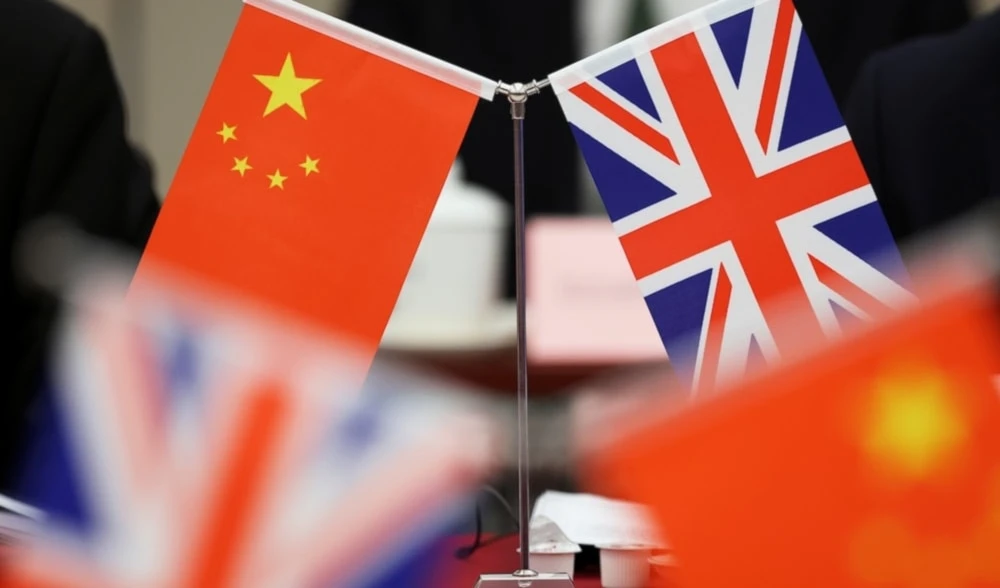China unveils powerful hydrogen weapon with 1,000°C sustained fireball
The explosive device, weighing just two kilograms, was developed by the 705 Research Institute of the Chinese State Shipbuilding Corporation (CSSC), a leading defense contractor specializing in underwater weapons systems.
-

Chinese scientists used a 2kg bomb to generate a fireball that lasted 15 times longer than an equivalent TNT blast, according to a new study (705 Research Institute)
Izvestia on Tuesday reported that China has successfully tested a new non-nuclear hydrogen-based explosive, signaling the development of a next-generation thermal weapon that may shift the dynamics of modern warfare.
The explosive device, weighing just two kilograms, was developed by the 705 Research Institute of the Chinese State Shipbuilding Corporation (CSSC), a leading defense contractor specializing in underwater weapons systems. The bomb uses magnesium hydride, a silvery hydrogen-rich powder originally designed for off-grid energy systems, as its core fuel. Upon detonation, the weapon generated a fireball exceeding 1,000 degrees Celsius — hot enough to melt brass and aluminum alloys.
"Magnesium hydride decomposes under the influence of heat and releases a gas that flares up and can burn for a long time," Izvestia reported, highlighting the chemical chain reaction that underpins the device's function. During testing, the fireball lasted more than two seconds — a dramatic contrast to the 0.12-second flash of TNT, as confirmed by both Russian and Chinese sources.
The weapon's thermal effect, not its blast pressure, is its main feature. Tests indicated that its overpressure is about 40% that of TNT, but its prolonged heat projection allows it to target large surface areas, drones, and dispersed infantry. The South China Morning Post cited the CSSC research team as saying the bomb's reaction is initiated when shock waves fragment magnesium hydride into micron-scale particles, exposing fresh surfaces. The gas released during decomposition ignites, and the resulting thermal energy creates a self-sustaining combustion cycle.
Izvestia further noted that "The use of magnesium hydride allows you to control the power of the explosion," allowing for customizable intensity depending on the operational target, from disabling infrastructure to widespread thermal area denial.
Treaty loophole
Though the explosive generates a high-temperature hydrogen fireball, it is not a thermonuclear weapon. As Izvestia explained, "The weapon requires a minimum of energy to ignite, but at the same time it provides a wide range of damage and rapid flame spread." Because it relies on chemical combustion rather than fusion, it does not fall under nuclear arms control treaties, making it strategically significant in terms of legal and military flexibility.
According to SCMP, the technology has matured due to breakthroughs in production methods. Previously, magnesium hydride could only be synthesized in small laboratory quantities. However, in early 2025, China launched a dedicated production facility in Shaanxi Province capable of producing 150 tonnes annually using a "one-pot synthesis" method developed by the Dalian Institute of Chemical Physics. This industrial capability removes key constraints on deployment potential.
Izvestia summarized the implications of the technology by noting, "In fact, this is a flash of hydrogen, but tests have demonstrated the high power of an explosive device, so the prospect of using such ammunition is possible."
Thermal supremacy
The test aligns with Beijing's broader military modernization and its strategic rivalry with the United States. Taiwan remains the central friction point. Washington continues to supply arms to the self-governing island, while Beijing reaffirms its "One China" policy and views such US actions as threats to its sovereignty.
In this context, China is rapidly enhancing its defense posture. In 2024, it unveiled the HQ-19 missile defense system, which officials claim can intercept both ballistic and hypersonic missiles. "According to its characteristics, Chinese air defense can surpass the best American developments," Izvestia wrote.
China's new hydrogen-based thermal weapon, non-nuclear yet devastatingly powerful, reflects a broader trend in asymmetrical armament; maximizing strategic effect while staying outside the bounds of nuclear treaty obligations.
With scalable thermal impact, low ignition energy, and industrial production now in place, the weapon signals China's intent to lead in the next generation of battlefield technologies.
Read more: Chinese warships 'ready for open house' ahead of PLA Navy anniversary

 4 Min Read
4 Min Read










